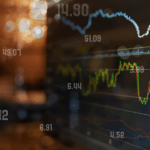With warmer temperatures arriving, Americans are about to experience a spike in their electricity bills. Many households will need to adjust their budgets as energy costs climb alongside the increasing heat. The U.S. Energy Information Administration (EIA) forecasts that the national average for electricity expenses in June, July, and August will reach approximately $186 monthly, marking notable rises compared to previous years.
Around July last year, electricity bills were also on the rise due to the increased demand driven by the hot climate. However, this year, the increase is even more pronounced, attributed largely to a 37% surge in natural gas prices impacting energy generation costs. The EIA noted that compared to 2021, there is a stark 25% hike in costs associated with electricity during the summer period. Whereas previous increases were moderate, this year’s prediction signals a more intense financial strain for consumers.
What Triggers the Rise in Electricity Costs?
The anticipated higher costs stem from both hotter-than-average weather predictions and significant jumps in natural gas prices, upon which much of the electricity generation relies. While cost increases are forecasted nationwide, regions such as New England are projected to witness the most substantial rises due to inadequate natural gas infrastructure. Monthly bills in New England could average $200, signifying a 6.7% uptick. Resolving infrastructure challenges in these areas might be key to mitigating higher costs in the future.
How Are Consumers Coping?
Consumers are becoming increasingly cautious with their spending in reaction to this upward financial challenge. Trade policies and ongoing economic uncertainties have led to a reduced willingness to engage in discretionary spending. Research indicates that as consumers prioritize necessities, like utility payments, they are compensating by decreasing spending on non-essential items. A significant portion of the population plans to either buy less or choose more economical alternatives in various expenditure categories to manage their financial bases.
“You can skip the morning latte, but you can’t skip feeding your family,” noted Karen Webster from PYMNTS.
While the current financial tension impacts consumers’ spending behaviors, this trend is not without historical precedent. Previously, shifts in economic conditions caused similar adaptive strategies among spenders, although current conditions show more compounded effects due to the combination of multiple influencing factors. Continued price instability is likely if demand and supply pressures do not adjust.
To alleviate the situation, stakeholders might explore technological advancements in energy efficiency or seek policy adjustments that could moderate natural gas price fluctuations. Consumers could also consider investing in energy-saving appliances and strategies to mitigate the rising utility expenses. Addressing the infrastructural issues in certain regions could significantly decrease the pronounced disparities seen across the country.










